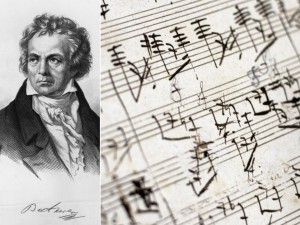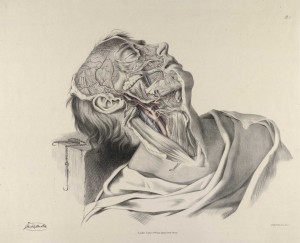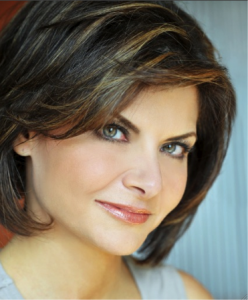
Finding the Art Inside You

About This Project
by Heather McElhatton
Dr. Archelle Georgiou is a doctor, an educator, a consultant and the former chief medical officer of United Health  Care. She’s dedicated her entire career to making people healthier, and to understanding how the human body works. “I’ve been in the health care industry for twenty plus years, and I’ve seen millions of dollars spent on programs to inspire people to take better care of themselves. Not much is working. So my hope is using art and anatomy will inspire people to treat themselves like art.”
Care. She’s dedicated her entire career to making people healthier, and to understanding how the human body works. “I’ve been in the health care industry for twenty plus years, and I’ve seen millions of dollars spent on programs to inspire people to take better care of themselves. Not much is working. So my hope is using art and anatomy will inspire people to treat themselves like art.”
Georgiou wants to share the biggest discovery she’s made during this mission and it’s not your typical medical prescription. She wants us to understand that we… are works of art .
“I entered the operating room and saw what living organs look like. They’re red and they glisten, they slide against each other, how they work together, and how they’re connected, is striking. It’s beautiful! For the first time I realized how beautiful the human body is. When I was sharing with some colleagues that the body is the most amazing piece of art – someone said back to me, “Well, but we don’t treat ourselv es like art.” It was at that moment I decided it would be wonderful to have a metaphor and maybe inspire people to treat themselves like art.”
es like art.” It was at that moment I decided it would be wonderful to have a metaphor and maybe inspire people to treat themselves like art.”
Georgiou realized that most people abuse their bodies, because they have no idea what a beautiful canvas they’re
destroying. They can’t see deep inside themselves. They can however- sometimes hear deep themselves. Take Beethoven, he was deaf and alcoholic and that, she says, helped make his music so unique with its discordant and irregular rhythm.
“Alcoholics can develop whats called a “cardio myopathy,” an enlarged heart, which develops into an irregular heart rhythm. There have been lots of researchers who have looked into Beethoven’s music and identified the discordant rhythms, the A-rrhythmia in his music, tha t makes it so beautiful, looks like the EKG rhythm of the heart of someone who has an arrhythmia. We were able to play some of Beethoven pieces and look at an EKGs and see how there’s huge overlap. Beethoven’s music was truly heart felt.”
t makes it so beautiful, looks like the EKG rhythm of the heart of someone who has an arrhythmia. We were able to play some of Beethoven pieces and look at an EKGs and see how there’s huge overlap. Beethoven’s music was truly heart felt.”
Georgiou finds keen visual parallels between Klimpt’s “Tree of Life” and the human pulmonary system, or lungs. She sees repeating patterns between Monet’s “Water Lilly’s” and the dyed eyelet cells of the pancreas. Another masterwork inspired not only by human anatomy, but by the dark passenger of disease as well. Like Beethoven’s beautiful arrhythmia, Monet had cataracts, which may have allowed him to see and paint in his classical impressionistic style. He also had diabetes, which is a malfunction of Pancreas. Were these artists aware of the connections they were creating? We can’t be sure.
Of all the art that’s particularly stunned Georgiou with its perplexing anatomical accuracy, “The Creation of Adam,” painted by Michelangelo in 1511 is on top. There, on the Sistine Chapel ceiling, God and Adam reach out to each other their fingertips almost touching – but not quite.
“If you take God out of the painting, and look at the shroud, that’s shape of human brain, exactly. Then where God  and Adam are almost touching, that’s exactly what two nerves look like when they’re communicating. Some of us may thing nerves touch when they communicate, but they never touch each other, they communicate thru a space, and shoot neuro-chemicals through that space to communicate, and that is exactly what this drawing depicts. What I think is really amazing about the “Creation of Adam,” was how did he know there was a synapse and not end-to-end communication between two nerves? They didn’t have microscopes or microscopic anatomy at the time, how
and Adam are almost touching, that’s exactly what two nerves look like when they’re communicating. Some of us may thing nerves touch when they communicate, but they never touch each other, they communicate thru a space, and shoot neuro-chemicals through that space to communicate, and that is exactly what this drawing depicts. What I think is really amazing about the “Creation of Adam,” was how did he know there was a synapse and not end-to-end communication between two nerves? They didn’t have microscopes or microscopic anatomy at the time, how did he know? Was it coincidence? Brilliance? or some sort of divine inspiration? I’m not sure, but it’s fun to contemplate.
did he know? Was it coincidence? Brilliance? or some sort of divine inspiration? I’m not sure, but it’s fun to contemplate.
In her “Art and Anatomy” class, Dr. Georgiou explains to her students that abusing your body is like abusing a great work of art. She stands in front of her class, next to a large framed reproduction of Picasso. Then she smears butter on the painting, and then pours a glass of wine on it, before finally lighting a cigarette and grinding it out on the canvas.
“That’s what we do to ourselves every single day, every time we douse our liver with too much alcohol, every time we think its okay to have this extra layer of fat on our body, and for those of us who choose to smoke, putting that colorless, but toxic resin, just like varnish, into our lungs that clogs every single pore that we have. Why do we do that to ourselves? Why don’t we see ourselves as a beautiful work of art that we should frame and take care of? Sometimes I think that we don’t appreciate the transience of our body. We think that our body is always going to be there, it’s going to never let us down, and it’s indestructible, but it fact it isn’t indestructible. So we take advantage of ourselves, like we take advantage of relationships. We think that someone will always be there, until they aren’t.”
ourselves every single day, every time we douse our liver with too much alcohol, every time we think its okay to have this extra layer of fat on our body, and for those of us who choose to smoke, putting that colorless, but toxic resin, just like varnish, into our lungs that clogs every single pore that we have. Why do we do that to ourselves? Why don’t we see ourselves as a beautiful work of art that we should frame and take care of? Sometimes I think that we don’t appreciate the transience of our body. We think that our body is always going to be there, it’s going to never let us down, and it’s indestructible, but it fact it isn’t indestructible. So we take advantage of ourselves, like we take advantage of relationships. We think that someone will always be there, until they aren’t.”
Dr. Georgiou says that no matter what our ‘works of art’ or our bodies currently look like, or how they function, there is hope, because bodies, like works of art – can be restored. YOU are a walking work of art, and if you could only see inside yourself, you’d understand what incredible, irreplaceable treasure your body really is. your bodies deserve attention, and requires care…along with the occasional unplanned repair.
“My idea of a beautiful world is that we love ourselves physically, spiritually, emotionally, professionally. Then we need to take the action required to take care of ourselves, to treat ourselves like the art that we are.”
Links
University of Minnesota Carlson School of Management


